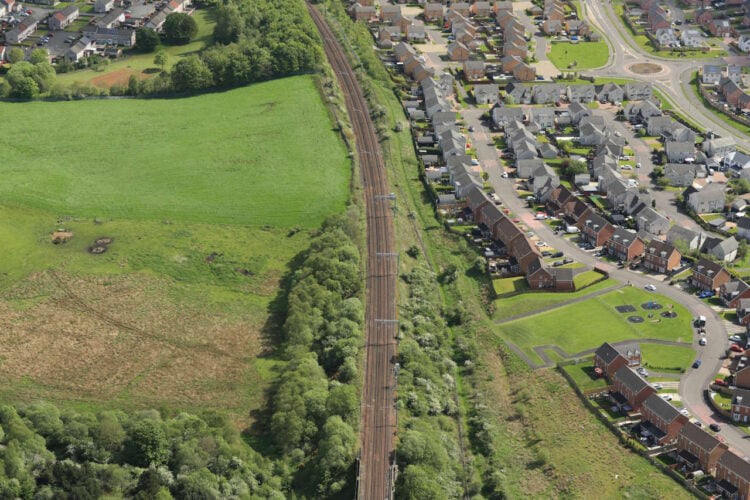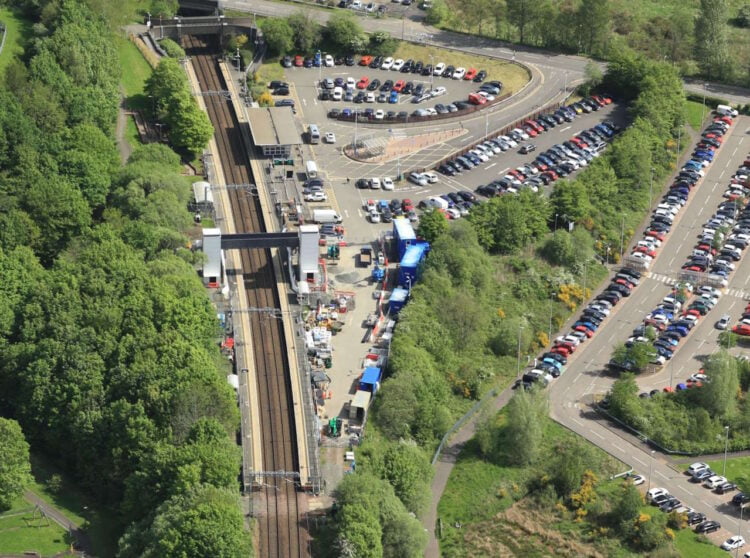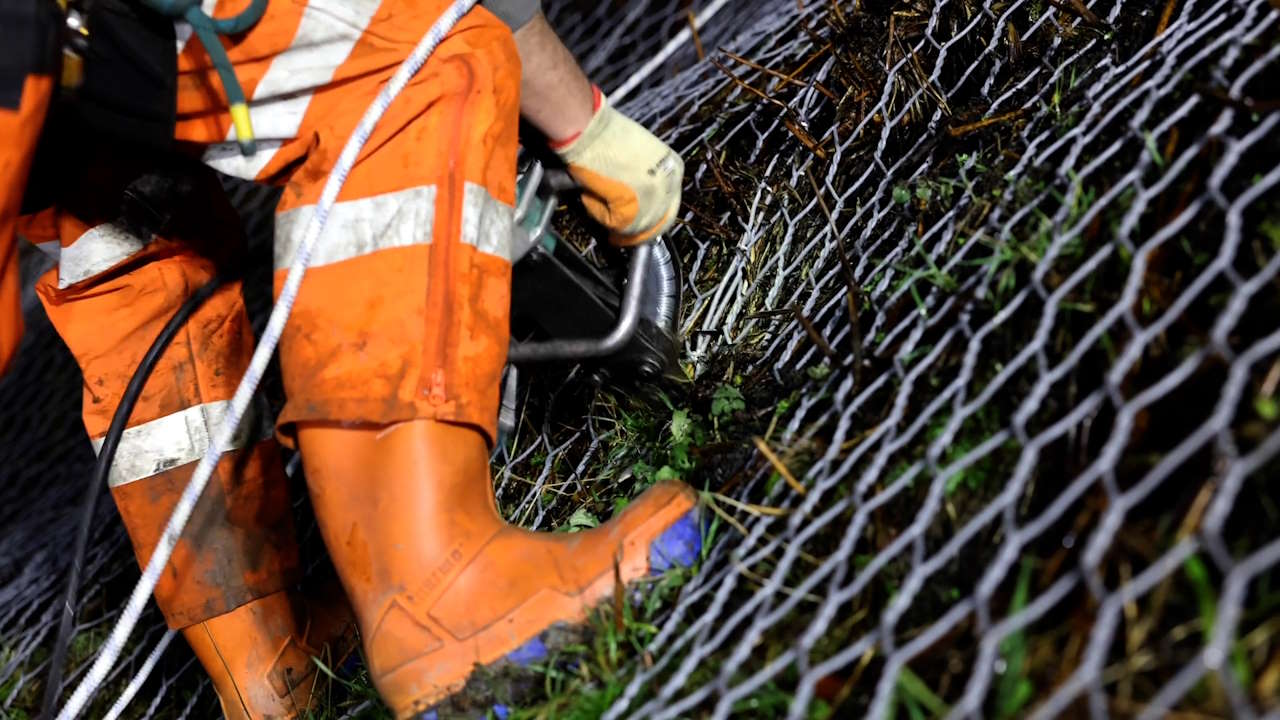Engineers have completed a £3.5m project to prevent future landslips on the Edinburgh to Glasgow main line between Croy and Dullatur in North Lanarkshire.
The line was becoming susceptible to an increased risk of landslips during periods of heavy or prolonged rain, which has resulted in the imposition of speed restrictions on the line.

To prevent future wash-outs and rock falls and remove the need for speed restrictions, during the last 12 months, Network Rail, with its contractor QTS, have carried out a number of remedial works.
Engineers cleared vegetation, upgraded the drainage systems, and installed high-strength mesh, soil nails and rock bolts.
A large pneumatic drill called a skid rig hammered in the soil nails up to 20m to stabilise the slope/embankment.

This month engineers have already had to carry out major work after landslips in Buckinghamshire and Kent.
Sean Gallacher, regional asset manager for Geotech at Network Rail, said: “The Edinburgh to Glasgow line was first built in 1842 by the Victorians, whose approach to ground engineering was different to the way it is now.
“As a result of the steep earthworks they built and the fact the assets are ageing, we have had to slow trains down to keep everyone safe during periods of extreme rainfall, where there’s a higher risk of landslips.
“This crucial project will reduce the need to slow down trains during heavy rain, meaning more journeys are completed on time.
“It’s all part of our commitment to running a safe and reliable railway for our passengers.”

Brian Connolly, project manager of Capital Delivery for Network Rail, said: “Our work at Croy has involved installing rock netting, maintenance of around 1km of drainage and installation of over 500 soil nails to ensure the stability of the high slopes and prevent rocks and earth from falling onto the line.
“Alongside this work, more than 5000 square meters of vegetation has been cut back through the cutting to allow inspection and installation of the 6500 square meters of rock netting.”
Chris Blair, contract manager from QTS, said: “Much of the work at Croy was carried out by our IRATA (rope trained) operatives. We also used QTS skid rigs – all of this enabled us to work on the steep slopes here which are pretty inaccessible for large plant and machinery.
“We worked during the night and while the railway was open to maximise time on site and productivity, ensuring the works were completed efficiently without disruption to services.
“We do understand that there has been some inconvenience to those who live nearby at times. We felt it important to engage with the local community and so we visited Holycross Primary School to deliver STEM sessions. We also linked with the local Spina Bifida Centre to carry out maintenance works within the gardens and constructed a sheltered area for those who visit and work in the centre to enjoy.”






Responses